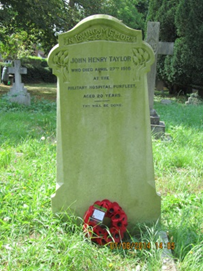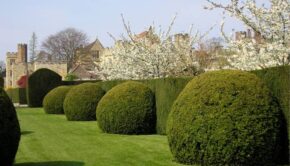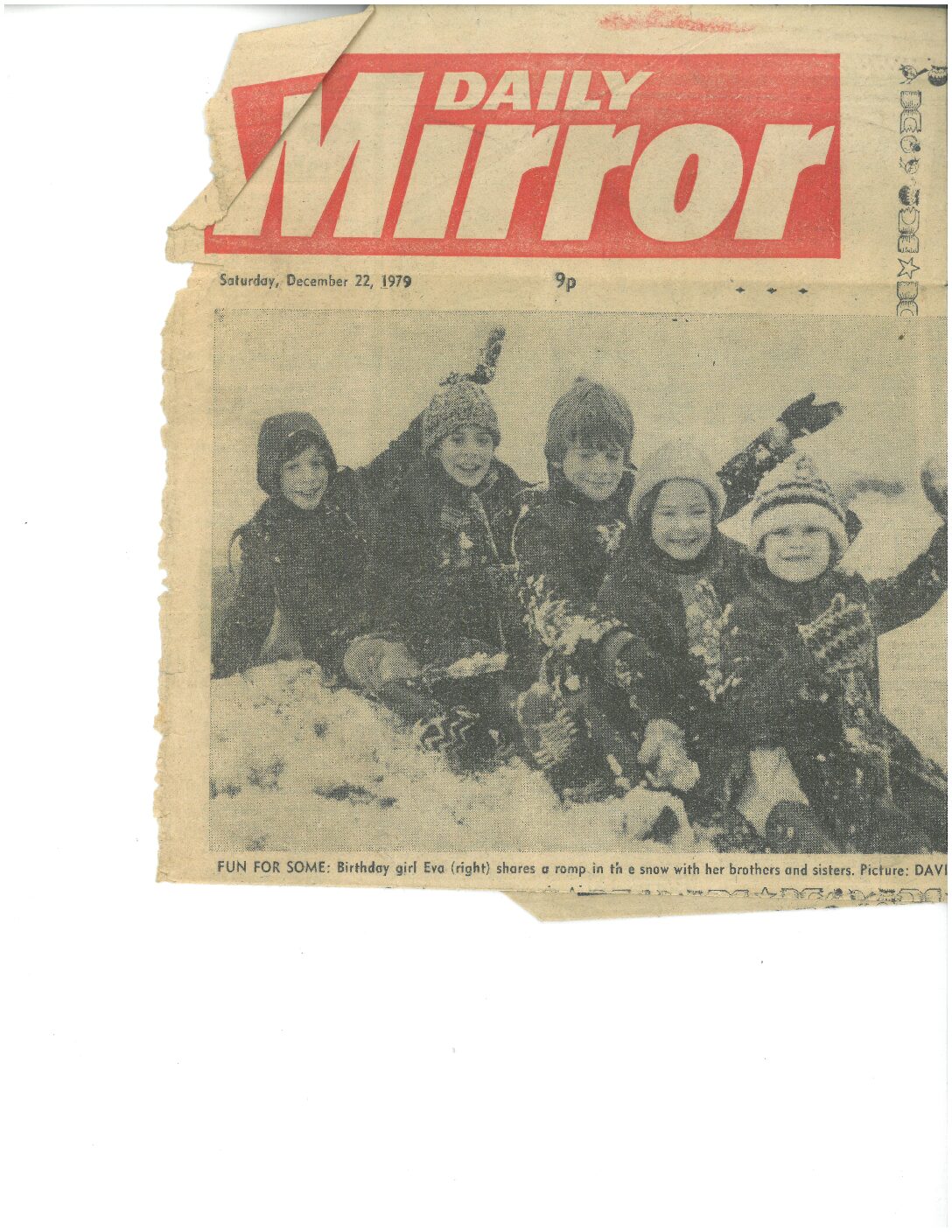PADDOCK WOOD’S WAR GRAVES
By John and Meryl Flashman
Remembrance Sunday is especially poignant this year as not only does it cause us to remember the centenary of the commencement of World War One but it also marks the 75th anniversary of the outbreak of the Second World War. Like most communities, Paddock Wood provided its share of young men to serve in these conflicts, many of whom never returned home to their families and loved ones.
The last resting places of many of those who did not survive the conflicts are in foreign lands but some who died in the UK were interred in St Andrew’s Churchyard, in most cases with full military honours. A visit to the (now closed) Churchyard will reveal that four soldiers from WW1 lie buried there together with one Royal Marine, one airman and two soldiers from WW2.
Three of the WW1 burials are in private family graves, whilst the fourth is a Commonwealth War Graves Commission (CWGC) plot.
The earliest is the grave of Private John Henry Taylor, son of Thomas and Kate Taylor, who was born at Staplehurst in 1896. By 1911 the family had moved to Rhoden Farm, Lucks Lane. John served with the 14th battalion, London Scottish Regiment but in April 1916 he contracted measles (then a potential killer) followed by pneumonia. He died at Purfleet military hospital on 27 April 1916 aged 20. He was interred with full military honours.
The next WW1 burial was that of Private Albert Frank Wilkins, son of Ernest and Sarah Wilkins of Old Kent Road, who was born in Paddock Wood in 1896. A baker by trade, he enlisted in the army in February 1915 and served with C Supply Company, Army Service Corps, Aldershot. He died from TB in Aldershot Military Hospital on 30 June 1916 aged 20. His plot is marked by a stone placed by the CWGC which records his name as Frank Albert Wilkins.
The third interment was that of Lance Corporal Alfred Douglas John Pullen, son of John and Ellen Pullen, who was born at Halstead, Kent in 1896. The family moved to Paddock Wood and by 1911 were living in Mount Pleasant. He was employed as a railway clerk before enlisting in the Royal West Kent Regiment around September 1914. He transferred to the newly formed Tank Corps in 1917 and died suddenly on 8 June 1918 at the Tank Corps Depot in Wareham, Dorset, aged 22.
The final WW1 burial was that of 2nd Lieutenant John Lewis Luck, younger son of Amos and Harriett Luck, who was born in 1896 at Yalding. By 1911 the family was living at Woodlands. John worked on the family farm before enlisting in February 1915 and by December 1916 was in France with the Royal West Kent Regiment. In October 1917 he was commissioned into the West Yorkshire Regiment, returning to France in November 1917. On April 25th 1918 he was wounded in his leg and arm and died in hospital at Plymouth on 6 September 1918 from septic pneumonia. He was buried in the Churchyard following a funeral with full military honours.
The first serviceman from WW2 to be interred in the Churchyard was Arthur Howell, a sergeant navigator in the RAF. Arthur who was born in 1923, was the eldest son of Luther and Winifred Howell of Weir’s Cottage, Commercial Road. He volunteered for service in the RAF in 1941, became a navigator in a Lancaster bomber and died aged 20 in a plane crash on the Yorkshire/Lincolnshire border on 28 September 1943. He was buried in the Churchyard with full military honours.
The second military burial of WW2 was William Robert Wignall who was born in 1909 at Bethnal Green where, in 1934, he married Elizabeth Maud Sheen by whom he had three children. He joined the Royal Army Service Corps and was deployed with 257 Ambulance Car Company when he died in Cambridge on 26 March 1944. His name does not appear on the town war memorial but his body was brought back to Paddock Wood for burial, his wife and family being resident in the parish at that time.
The third burial is that of Ronald Heenan He was born at Taunton in the first part of 1915 and joined the Royal Artillery shortly after war broke out. He was deployed with No 1 Searchlight Regiment and in the latter part of 1944 married Evalyn R Butler. Tragically he died at Folkestone after only a few weeks of marriage. Like William Wignall his name does not appear on the town war memorial but he was brought back for burial in Paddock Wood where his widow was living at the time. She later married George Bance.






Comments